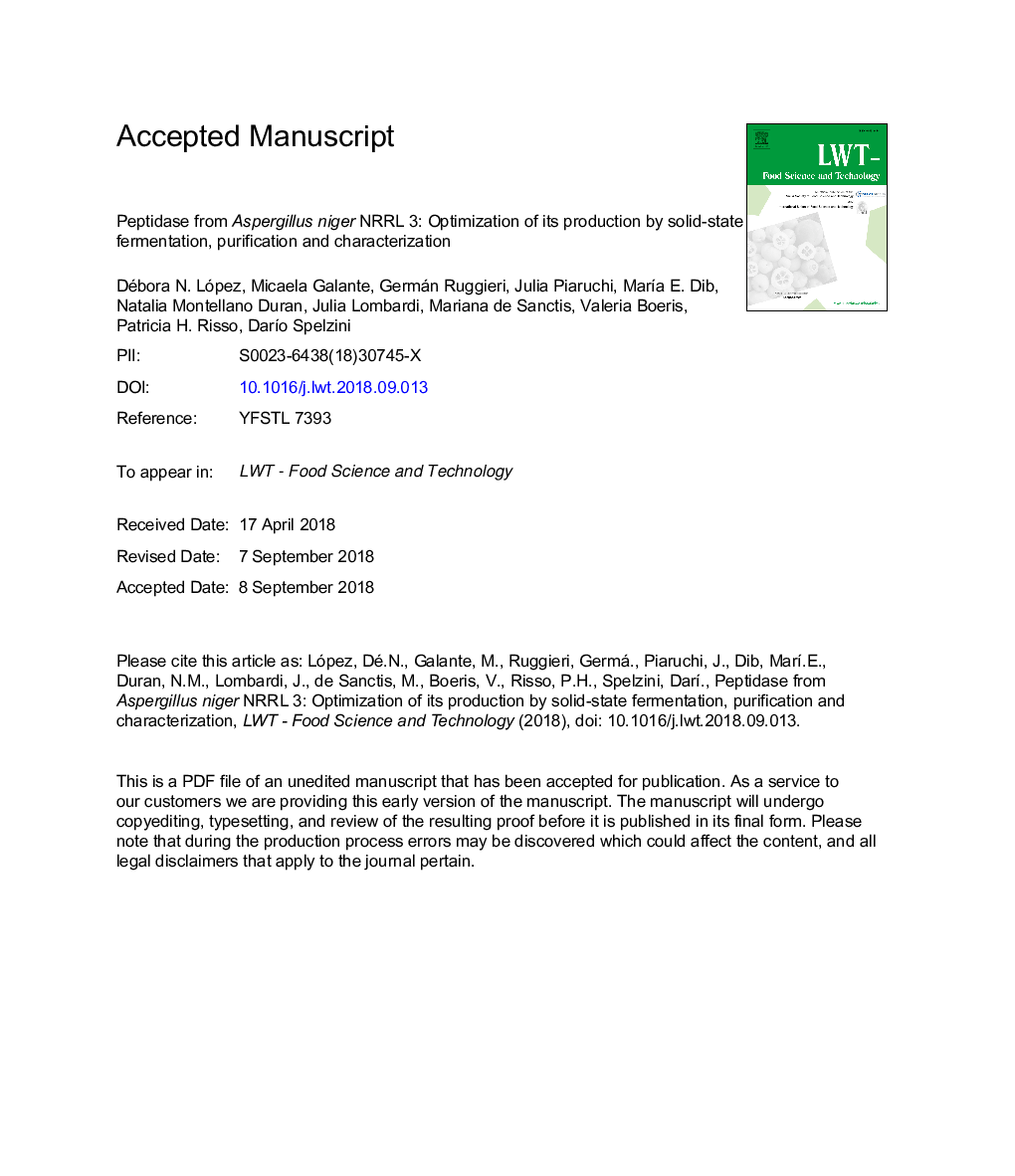| Article ID | Journal | Published Year | Pages | File Type |
|---|---|---|---|---|
| 10130473 | LWT - Food Science and Technology | 2018 | 41 Pages |
Abstract
Orange peels, soybean hulls, Ilex paraguariensis and Platanus x hispanica were evaluated as solid substrates in order to produce peptidases from Aspergillus niger NRRL3 (PAN) under solid-state fermentation. The mixture of soybean hulls and orange peels enabled fungal development and showed the highest peptidase production. The optimal conditions for PAN production were found to be as follows: soybean hulls/orange peels mass ratio, 0.25; initial pH, 7.05; K2HPO4 43.5â¯g/L and 4.03â¯g/L NaNO3; inoculation with 5000 conidia per 3â¯g of solid substrate; incubation conditions, 30â¯Â°C for 5 days. Under these conditions, the peptidase activity was 1000â¯Â±â¯100 AU/mL. PAN concentration was performed by adsorption on a DEAE-cellulose matrix. The subsequent purification was carried out by gel filtration on Sephadex G-100, with a global purification factor of about 9. PAN proved to belong to the serine-type of peptidases, its highest peptidase activity being at 65â¯Â°C. However, proteolysis at 60â¯Â°C proved more suitable due to the differences in the inactivation rate. Besides, PAN showed high stability over a pH range of 4-11. Taking all this into account, we herein describe the production and purification of a serine peptidase from Aspergillus niger NRRL3 for the first time.
Related Topics
Life Sciences
Agricultural and Biological Sciences
Food Science
Authors
Débora N. López, Micaela Galante, Germán Ruggieri, Julia Piaruchi, MarÃa E. Dib, Natalia Montellano Duran, Julia Lombardi, Mariana de Sanctis, Valeria Boeris, Patricia H. Risso, DarÃo Spelzini,
